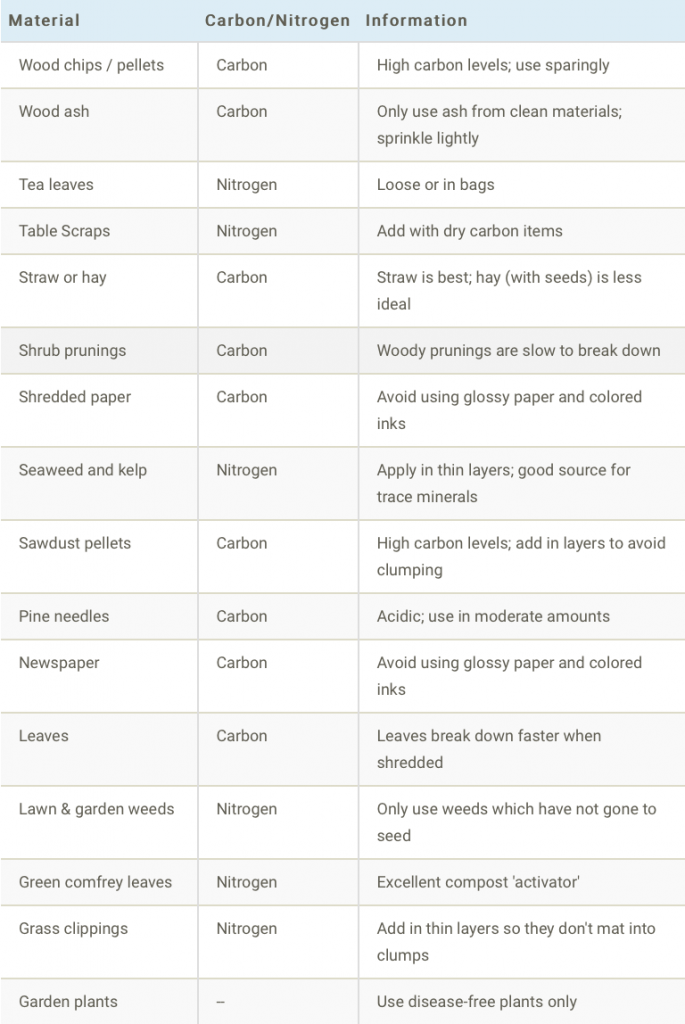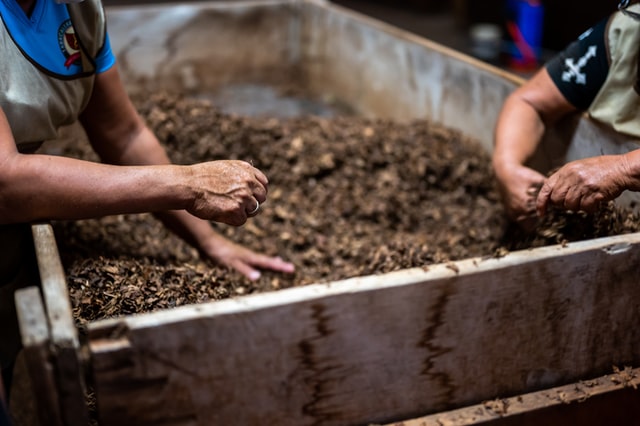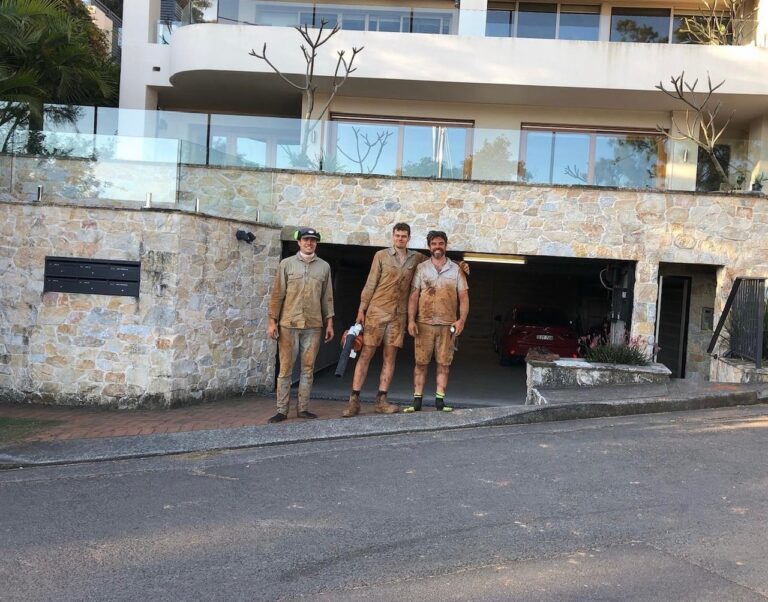Compost in the breakdown of organic matter under oxygen rich conditions. The result is a final compost product, that is earthy and a dark material, that is known as Humus or black gold. It’s a nutrient-rich fertilizer that can be added into the soil.
Each household can benefit from composting. Not only does it enrich your soil, it also reduces household waste by an average of 30%. This organic matter would otherwise be in landfill where it can’t efficiently break down and be put to its best use.
Composting is also good for the environment as it allows individuals to recycle organic matter into their garden and stops unnecessary landfill. Here at Sydney gardeners we use composting as a way to keep to recycle the natural waste we produce while also creating healthy nutrients for our gardens.
Landfills around the world are quickly filling up, one third of landfill matter is made up of organic matter. Composting helps divert this waste from landfill and replenishes the soil. Saving the space in landfill for things that should be there, not perfectly good compost material.
Each compost can be different and what you put in your compost depends on what compost you have. General rules do apply. All materials are either carbon or nitrogen based, obviously to a varying degree. Maintaining the balance between these two elements in your compost pile is essential. The balance however between these two isn’t a 50/50 balance, I talk about what has worked well for me a bit later on.
Your compost should be in an area that’s easy to access, this will encourage you to use it. Somewhere that gets enough sunlight as the sun provides heat that helps speed up the composting process.
Brown ingredients (carbon based)
Green ingredients (nitrogen based)
Whilst many people are only thinking of composting their household waste, your yard waste can be an excellent addition to your compost pile. Branches, dried leaves, bark, are all carbon rich matter and suitable for your compost. Manures, Lawn clippings, kitchen waste and food scraps are nitrogen and protein rich matter. A healthy compost pile has more carbon than Nitrogen.
The ratio that I have found works well is one-third green and two thirds brown. This allows for oxygen to access the compost pile as the bulkiness of the brown materials leaves plenty of room. Having excessive amounts of nitrogen causes the compost pile to be far too dense, and may cause your compost to smell. Another way to combat this smell is to always cover Nitrogen-rich material (which can cause odours) with carbon rich material, which has an earthy smell, if you’re in doubt add more carbon.
Carbon-rich matter is referred to as brown or browns whereas Nitrogen is referred to as Greens in gardening. It is essential to have the correct ratio of greens and browns in your compost to encourage healthy growth of your plants. The most common carbon-rich matter includes bits of wood, dried leaves, bark dust, brown paper bags, eggshells, stems and branches of plants.
All these substances provide a fluffy and light body for a good compost. Talking about the greens, Nitrogen-rich matter mostly includes waste from the kitchen, lawn clippings, green leaves and food scraps. These greens act as a raw material which produces enzymes in your compost.
What should be the correct ratio of greens and browns in your compost? As a general rule of thumb, the best ratio is to use one-third of nitrogen and two-thirds of carbon matter. The bulkiness of brown material is the reason behind this perfect carbon ratio.
Carbon provides the required oxygen to penetrate the organisms residing there. Whereas, excess of greens can result in a slow decomposing mass that becomes smelly and dense. Good compost hygiene is very essential when you are planning to maintain a healthy garden. Good compost will release odours in the open air if fresh greens are used.

Things that shouldn’t go in the compost are:
Bones, Fish, and any sort of meat, this will attract pests.
A great way to store your kitchen compost rather than making constant trips to your compost pile is by placing it in a container with a lit under the sink, or somewhere out of site. This will allow you to constantly add to your compost pile, and once it reaches an appropriate size, put it into your compost.
Yard waste and general green waste can be an excellent addition to your compost pile, however different material compost at different rates, everything will break down eventually. To speed up the process, chop up large materials into smaller materials to allow for easier composting.
If your property is always filling up with leaves. You can compost the pile of leaves by itself. For every foot or so of leaves include a layer of dirt, the pile should be damp enough that when you take a hand full and give it a squeeze a few drops come out.
Additionally, make sure the pile is not packed too tightly. If done right the pile will compost in 4-6 months, creating a dark and crumbly finish. Leaf compost is best used as organic soil amendment and conditioner. It doesn’t act well as a fertiliser because it is too low in nutrients.
Add Manure. This can come in the form of green clippings such as grass clippings, clover, buckwheat and wheatgrass. Just any nitrogen source.
Cover. Often layers of straw or a tarp, both will help retain moisture.
There is no correct answer for this question, as it depends on many factors. Some of the factors include
Following are the four simplest and most amazing composting methods that you must try if you are a garden owner and garden lover.
As the name suggests, in no turn composting, new material is added on top of the existing compost without turning the compost. The most tiring thing with composting is turning it from time to time to aerate the soil. Whereas in ‘no turn’ compositing you don’t have to turn the pile anymore for aeration.
The secret of no turn composting is thorough mixing of course material during pile formation. Due to this, the compost will be developed fast enough and will show excellent results. The nitrogen levels in No Turn compost are sometimes higher than the turned compost.
In ‘No Turn’ composting, fresh compost is taken from the bottom of the bin and new material is continuously added at the top layer.
The best way of composting is by making your own compost bin. It is the least expensive method and will give you wonderful results. You can use a heavy-duty garbage can and simply drill holes for aeration at 15cm gaps. The diameter of holes can range from 1.2 cm to 1.5 cm depending on the size of your garbage can. After that, you must fill the can with green and brown material in the above-described ratio. Stir and turn the pile in the bin after specified intervals of time to speed up the overall process. If the garbage can is equipped with a tight and secure lid then you must turn it and roll it over to evenly mix the compost.
Another way is to use a compost Digester for your garden. Compost digesters are enclosed on top and sides but open at the bottom, so that they directly sit on the ground. They are just like regular bins turned upside down. Digesters are very common in residential areas due to small size. These digesters tend to discourage the presence of pests because of their unique design. These bins are also very reasonable in terms of cost but it becomes difficult when it comes to turning the pile. The process becomes slow due to this and it takes several months to produce the compost.
Out of all, the most efficient method to produce compost is using tumblers. In these containers, it is possible to maintain high temperature as compared to other methods. The reason behind this is the thick container which acts as an insulator. In some of the tumbler designs, there are paddles or spikes which prevent the compost to clump. Whereas other designs have holes at the end for aeration. This design significantly speeds up the composting process and produces a good quality compost.
A tumbler design provides the following benefits:

The compost is ready when it has turned into a brown almost crumbly texture, It will no longer smell like rotting vegetables but will smell like rich dark earth. The pile will have shrunk to half its original size and there is no evidence of the organic material you have put it.
If you’re unsure and want to test if your compost is done, grab a handful and put it in a sealed plastic bag. Smell the compost after 3 days, if it still smells dark and earthy it’s ready to go. If it smells sour, it will need more time to recompose. Be careful not to use unfinished compost as it can damage plants. Immature compost can also introduce weed seeds as well as root-damaging organic ads.
Once your compost is ready for use, there are many ways you can use it. It can be used as mulch around the garden, used as potting mix for plants, used as a fertiliser, or you can just use it to help enrich your soil around your garden.
Using green waste in large chunks should be avoidable as it takes your compost longer to break down larger pieces of green waste, if you are in this position, the best solution is to get a chipper/shredder, this will turn things into smaller pieces making it easier to break down.
Maintaining the right ratio is important as it means the compost will work effectively, keeping roughly two thirds of the compost as carbon rich material will keep the compost functioning at its best ability.
If your compost is odorous, this is from not covering waste that has been deposited in the compost. When food waste is added to the pile, be sure to add some fresh grass or leaves on top of it and turn the pile immediately. This will keep the odours away.

Operator of Sydney Gardeners

Garden maintenance is a top quality services provided throughout Sydney.

NDIS gardening service is a specialized offering tailored for individuals with disabilities.

Sydney lawn mowing is a top of the range high quality service

We love everything trees, safety and efficiencey is priority.

Nothing better than a good contract. Stay organised with us.